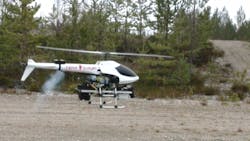Drones represent one of the most transformative technologies that have appeared on the horizon not just for utilities but for everyone else. Drones allow, for the first time, a mechanism for inspecting everything both during normal and during emergency situations. Drones can perform so many tasks much faster, better, and much more easily than humans. The most common image of a drone is that of something that flies under remote control, but it also includes anything that is remote controlled that can crawl, walk or fly.
North American utilities are generally spread over broad expanses of land that very often include downtown/urban densely populated areas and also large rural sparsely populated areas. The problems in downtown/urban areas are very different from those afflicting the rural areas. For the same set of reasons, the benefits and use of drones in downtown/urban areas will be very different from those of rural areas.
So what? Let us look at some key areas where drones can be of use:
·Vegetation management: Make routine survey trips over transmission and major distribution lines to track growth of vegetation in and around them. Sophisticated imagery can be used to track growth over time and drive vegetation management routine.
·Transmission line monitoring: One or more of either flying drones or line-based crawlers can move over the transmission lines and perform inspections of lines and insulators.
·Storm/damage assessment: Fly over vast storm impacted territories to create a visual image of the damage allowing utility service centers to develop a prioritized list of outage causes even before people can drive to the locations.
·Underground cable maintenance: Underground cables are one of the most difficult components to inspect for maintenance and/or to fix when something goes wrong (e.g., a fault). Crawlers can go into the conduit and perform close-by inspections of the cable both visually (using imagery) and by checking other aspects of the cabling.
This list can go on and on.
What is the key to drone success? The key to this success is a combination of regulation and business transformation. The first focuses on what can be done by the drones and under what constraints. The second one is equally if not more important and that is about utility transformation. The utility needs to adjust its processes so that the true value of the technology can be delivered.
About the Author
Mani Vadari
President and Founder
Dr. Mani Vadari is affiliate professor at University of Washington and founder and president of Modern Grid Solutions (MGS). Dr. Vadari delivers consulting and training services globally to smart grid companies seeking deep subject matter expertise in setting the business, technical and strategic direction to develop the next-generation electric/energy system. With over 30 years of experience, he has authored more than 100 industry papers, articles, and blogs, delivering business and technical solutions for transmission, distribution, and generation operations, wholesale markets, smart grid, cybersecurity/threat assessment, and smart cities. He has also published two books, Smart Grid Redefined: Transformation of the Electric Utility and Electric System Operations – Evolving to the Modern Grid.
